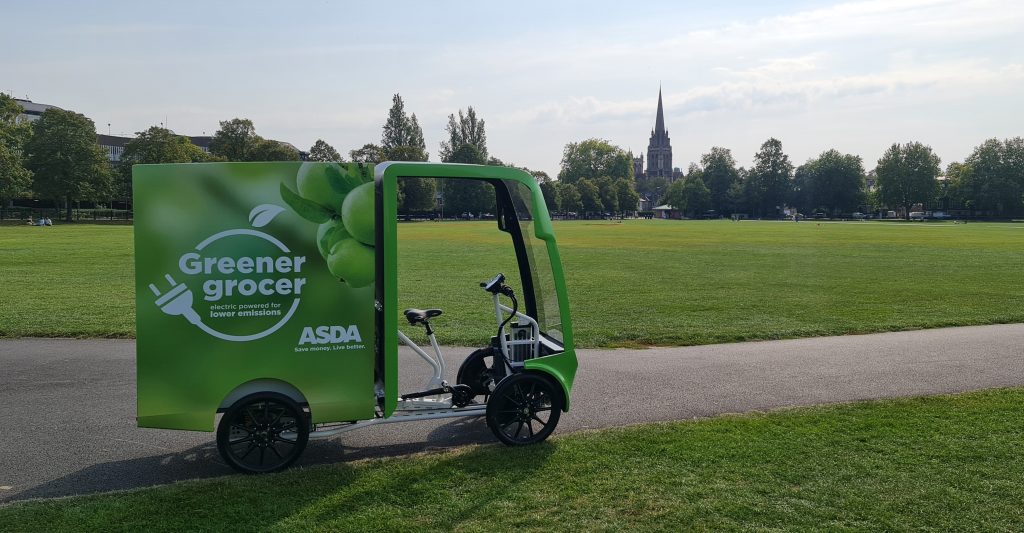Electric Assisted Vehicles (EAV) recently had its 2Cubed commercial vehicle put to the test by Asda.
The Oxfordshire-based micro-mobility manufacturer has created a lightweight commercial vehicle that is capable of transporting 10 tote boxes containing the equivalent of a weekly shop for 2 customers. Also, according to the company, the 2Cubed has the ability to cover up to a 60-mile delivery round more efficiently than either electric or internal combustion engine vans.
Asda used this innovative vehicle over two weeks to make home deliveries in Cambridge, as part of a test conducted by the retailer’s delivery team, as it focuses on a future strategy to assist in hard-to-reach urban areas such as pedestrianised areas and low emission zones.
The agile and compact vehicle has been appreciated by the retail giant as it made deliveries easier, according to Simon Gregg, Vice President of Online grocery at Asda:
“It was great to see the reaction to the e-bike when we took it out on the road, it was really well received and definitely was a talking point at the store and with our customers,” he said. “A solution such as this would allow us to get into towns and cities where access is limited, using either roads or cycle lanes.”
The 2Cubed has been designed to carry both bulk and weight while retaining its ability to move around quickly and efficiently within towns and cities. Cool temperatures can either be maintained by cool bags and insulated packaging or by using the EAV Cool fully temperature controlled Cool-Cargo transporter. According to Adam Barmby, Founder and CEO of EAV, the 2cubed could be a game-changer in the delivery panorama:
“It hugely reduces the environmental and emissions impact of vans and cars, which are currently being used by supermarket chains and other businesses within urban locations,” he said. “In a post-Covid world, where home deliveries have really become the norm, the shift to lightweight commercial deliveries is vital if we want to continue our efforts in improving the environment.”
Read more articles about EAV here.
